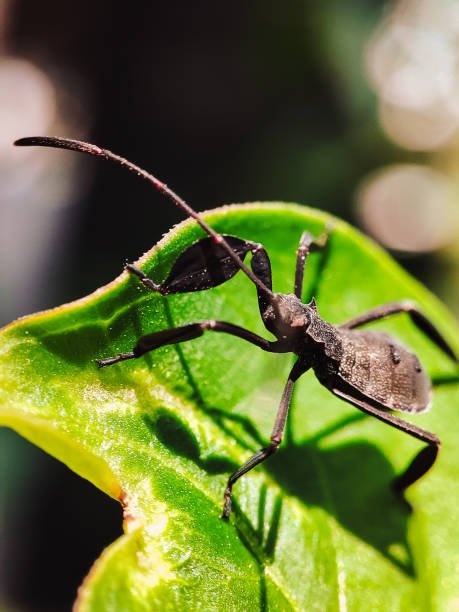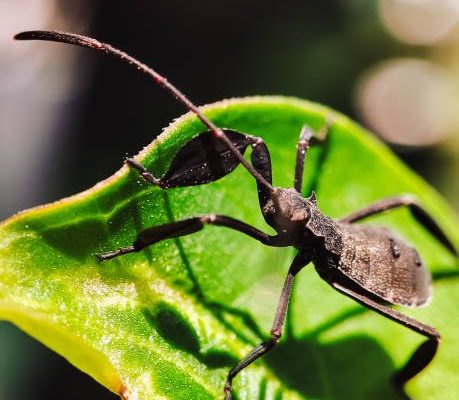
So, what really makes these organisms tick? Their habitat preferences play a huge role in their life cycle and survival. By exploring where Acanthocephala prefer to live—and why—we can better understand how they thrive in such unique environments. Let’s dive into the murky waters of this topic and explore the habitats that these intriguing parasites call home.
Understanding Acanthocephala: A Quick Overview
Before we dig into their habitats, let’s get a clearer picture of what Acanthocephala are. These worms belong to a specialized group of parasites that possess a spiny head, which they use to anchor themselves firmly to the intestines of their hosts. You might think of them as the ultimate survivalists. They’ve evolved to live off the nutrients of their host while often going unnoticed.
What’s interesting is that they don’t just choose any environment. Their habits and habitat preferences are closely linked to their life cycle, which requires multiple hosts. Initially, they hatch from eggs and then must find a suitable intermediate host—often a small invertebrate or fish—before moving on to their definitive host, typically a bird or mammal. This intricate dance between hosts is essential for their survival, making their habitat preferences all the more important.
Where Do Acanthocephala Live?
Acanthocephala are incredibly adaptable, which is crucial for their survival. These parasites tend to inhabit various environments depending on the species, but some common ones include:
- Freshwater Systems: Many Acanthocephala thrive in lakes, rivers, and streams, where they can easily find fish or invertebrate hosts.
- Marine Environments: Some species prefer the ocean, embedding themselves in the guts of marine mammals or fish.
- Terrestrial Animals: Acanthocephala can also be found in the intestines of land mammals, indicating their versatility.
The freshwater ecosystems are particularly ideal for them. Here, they can latch onto fish, which serve as a primary intermediate host, helping them complete their life cycle. That means if you’re near a lake or river, you might just be in the vicinity of these fascinating creatures.
The Life Cycle of Acanthocephala
The life cycle of Acanthocephala is as complex as their habitat preferences. It typically involves two hosts: an intermediate and a definitive host. Here’s how it works:
1. Hatching: Eggs laid by adult Acanthocephala hatch in freshwater environments.
2. Intermediate Host: The larvae invade an intermediate host, such as an insect or small fish. This stage is crucial for their development and survival.
3. Definitive Host: The parasite eventually finds its way into a definitive host, such as a bird or mammal, where it matures and reproduces.
You might be wondering why this life cycle is so intricate. Well, the need to transition between two hosts allows Acanthocephala to exploit various ecological niches, optimizing their chances of survival and reproduction. The ability to thrive in both freshwater and marine habitats increases their adaptability and resilience.
Environmental Preferences: Freshwater vs. Marine
When it comes to habitat preferences, Acanthocephala display distinct differences between freshwater and marine environments.
In freshwater ecosystems, Acanthocephala often thrive in areas with rich biodiversity. These locations provide multiple opportunities for finding suitable intermediate hosts. Think of it like a buffet where they can choose from various fish and invertebrates. Additionally, freshwater environments tend to have more stable temperatures, which is beneficial for the development of their larvae.
On the flip side, in marine environments, Acanthocephala face different challenges. Coastal regions with high nutrient levels can support their life cycle well, but they may also encounter competition for hosts. Here, they often rely on larger fish or marine mammals to complete their life cycle. Each type of habitat comes with its own set of challenges, and Acanthocephala are equipped to handle them.
Adaptation to Host Availability
One of the remarkable aspects of Acanthocephala is their ability to adapt to the availability of hosts in their environment. In areas where specific intermediate hosts are abundant—like particular species of fish or crustaceans—they’ll adjust their lifecycle accordingly.
These parasites can be quite selective. For instance, if a certain fish species is more available, the Acanthocephala will adapt their reproductive strategies to maximize interaction with that fish. It’s a bit like how we adjust our plans based on the weather. If it’s sunny, we’re more likely to go outside; similarly, Acanthocephala will take advantage of a favorable host to ensure their survival.
This adaptability also means they can shift their habitat preferences based on ecological changes. If pollution affects freshwater systems, some Acanthocephala might migrate to marine environments or look for alternative hosts, showcasing their resilience.
The Role of Temperature and Water Quality
Temperature and water quality play significant roles in the habitat preferences of Acanthocephala. Most species prefer warmer temperatures, which can speed up their development and lifecycle. This preference influences where they can be found, as seasonal changes in temperature affect the availability of their hosts.
Water quality is equally important. Clean, unpolluted waters are usually better for Acanthocephala because many of their intermediate hosts flourish in these conditions. Polluted waters can lead to a decline in host populations, making it tough for these parasites to find a suitable place to live.
In ideal conditions, the right balance of temperature and water quality ensures that Acanthocephala can thrive, reproduce, and fulfill their role in the ecosystem.
The Importance of Understanding Acanthocephala Habitats
Understanding the habitat preferences of Acanthocephala is not just a matter of academic curiosity. It has significant implications for ecology, public health, and fisheries.
For ecologists, monitoring Acanthocephala populations can signal changes in environmental health. Since these parasites are sensitive to pollution and habitat degradation, they can serve as indicators of ecosystem health.
For fisheries, awareness about these parasites is vital. They can affect the health of fish stocks, which impacts both recreational and commercial fishing industries. Acanthocephala infestation in fish could harm both the fish population and those who consume them.
Ultimately, studying their habitat preferences gives us a glimpse into how ecosystems function, how species interact with their environments, and what adjustments might be needed in conservation efforts.
In closing, Acanthocephala might seem like just another creepy crawler in the animal kingdom, but their specific habitat preferences reveal a lot about their survival strategies and the environments they inhabit. By understanding where they thrive and why we can appreciate the fascinating interconnectedness of life in our ecosystems. So, the next time you hear about these peculiar parasites, remember that they’re not just living their lives; they’re adapting, surviving, and contributing to the world in their own unique way.

